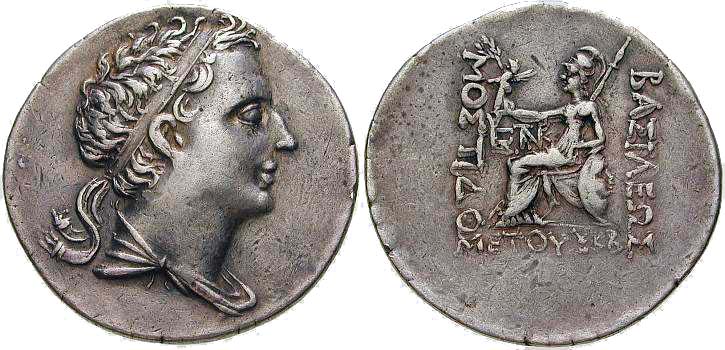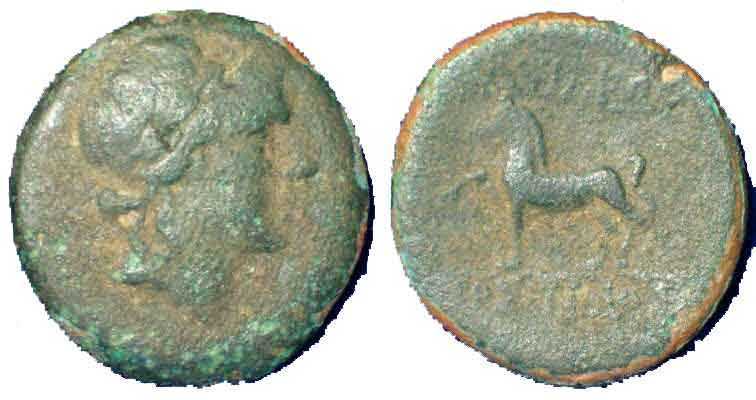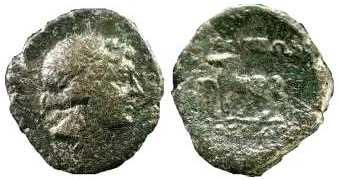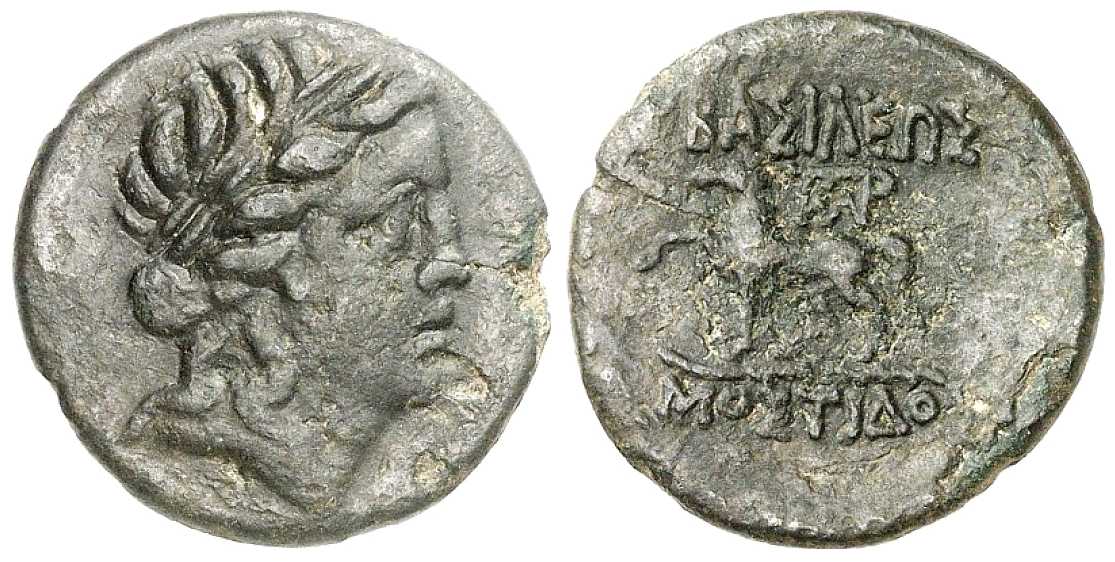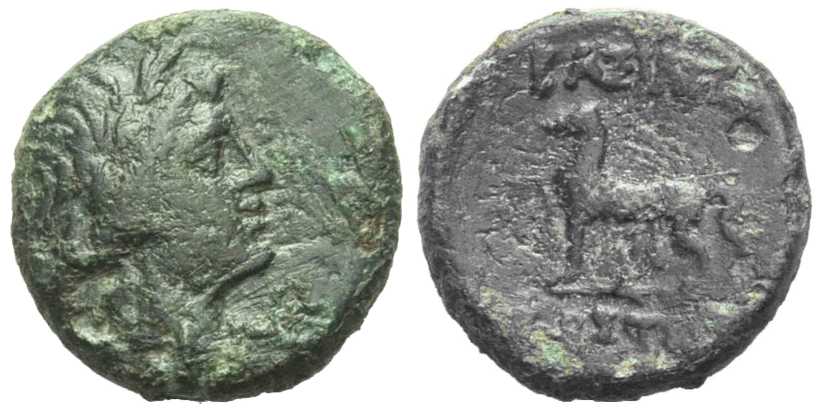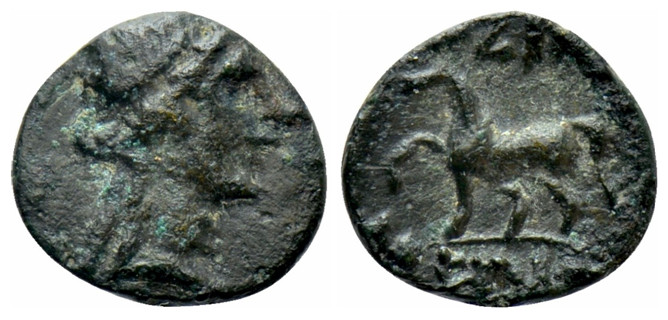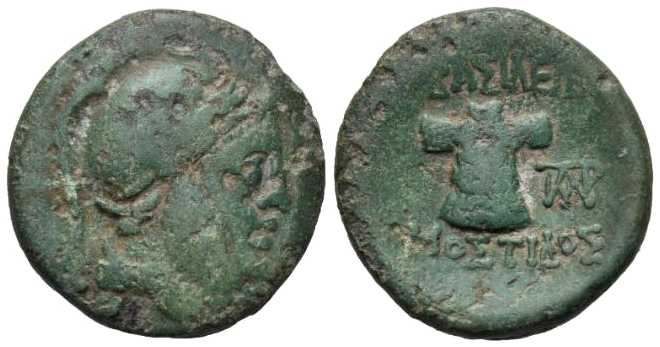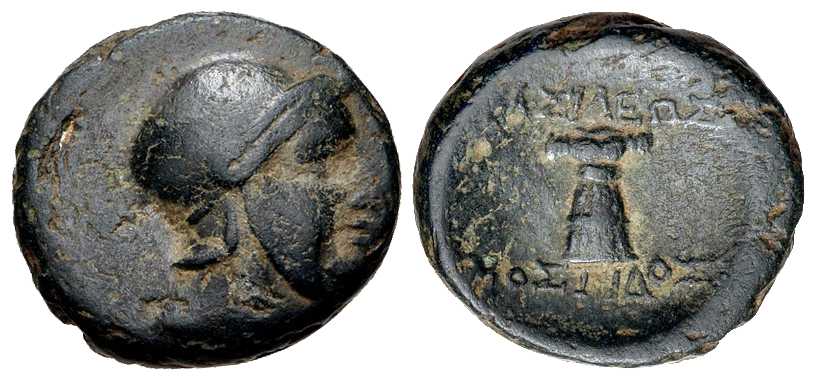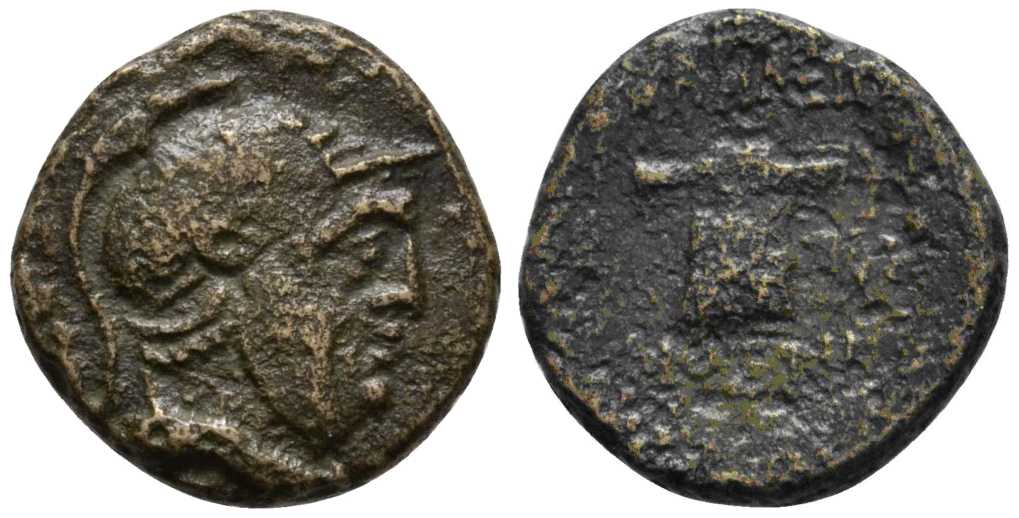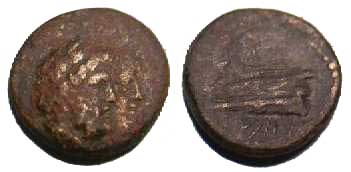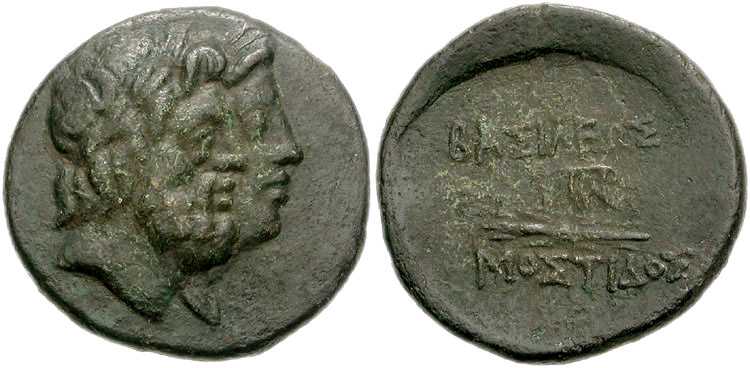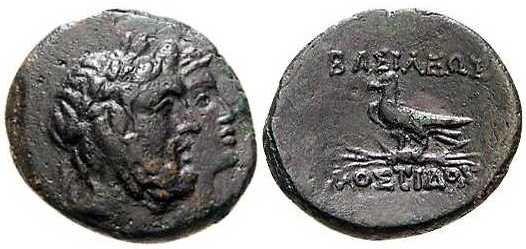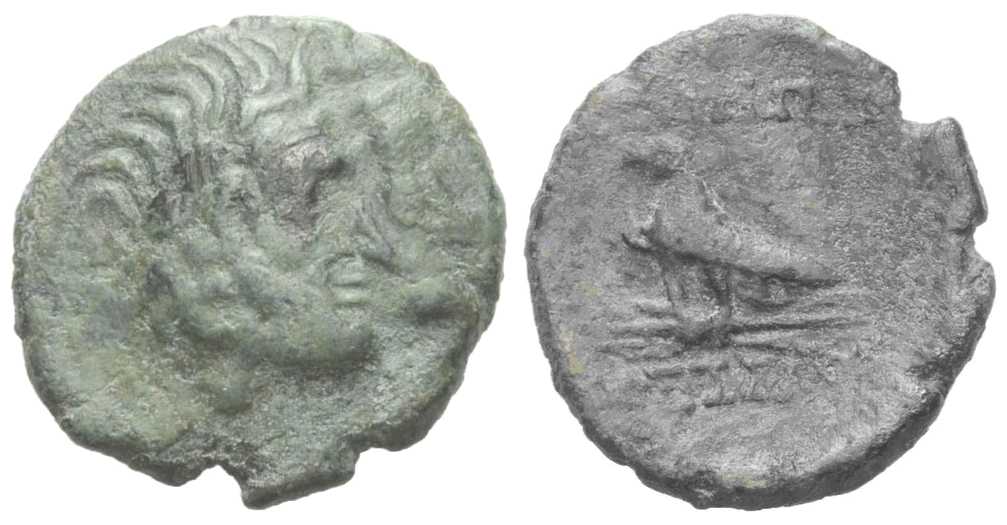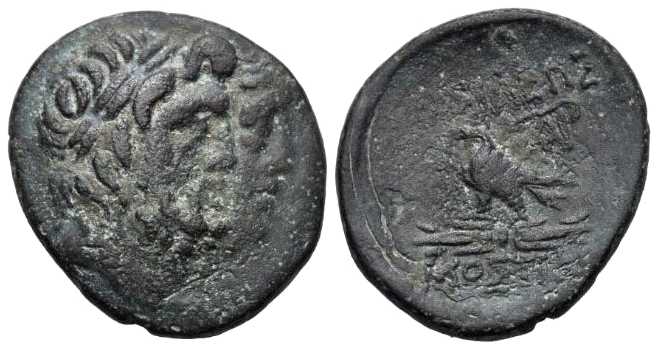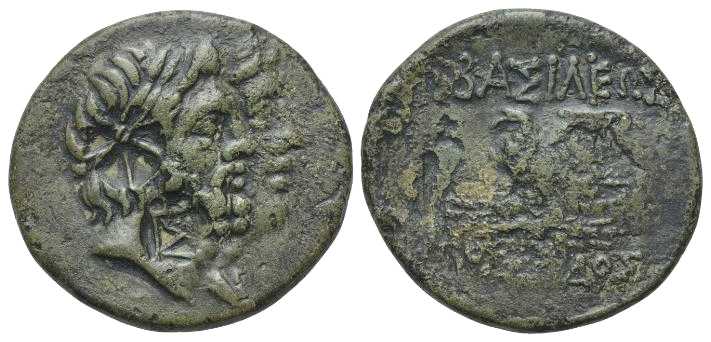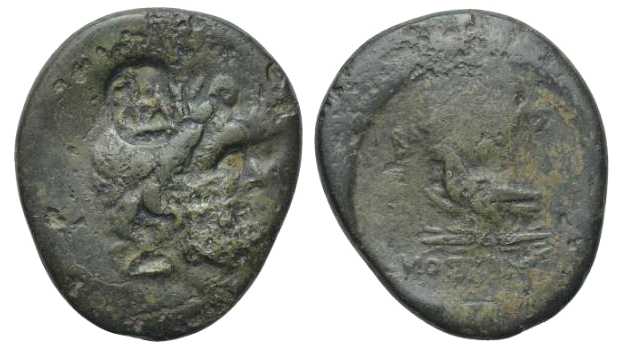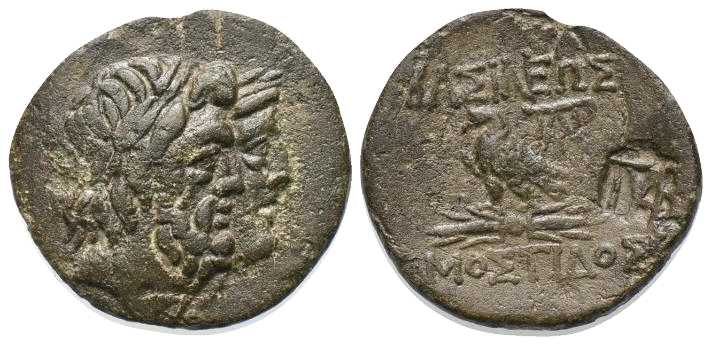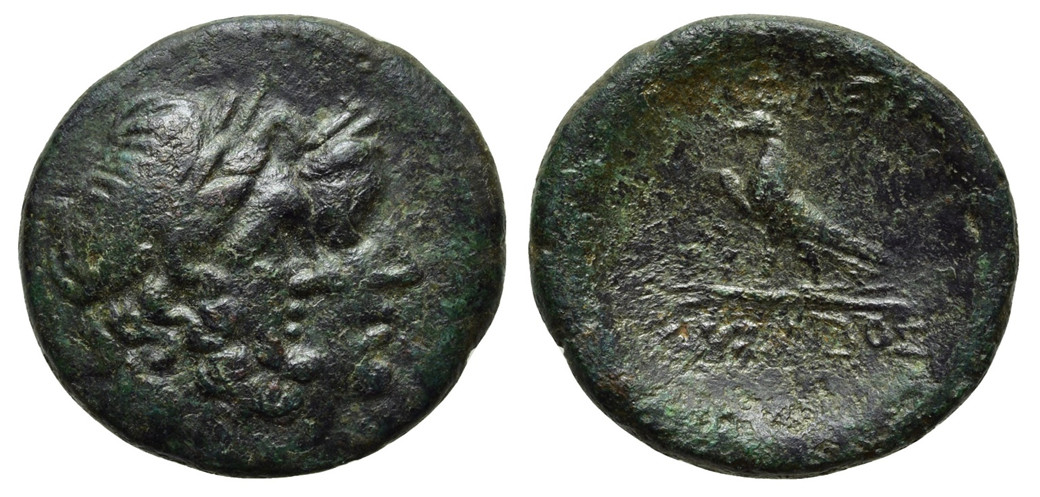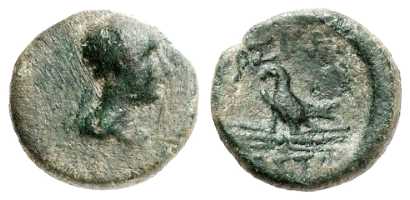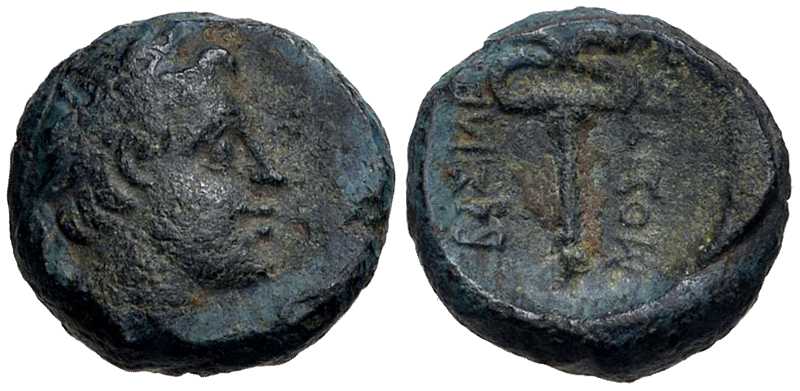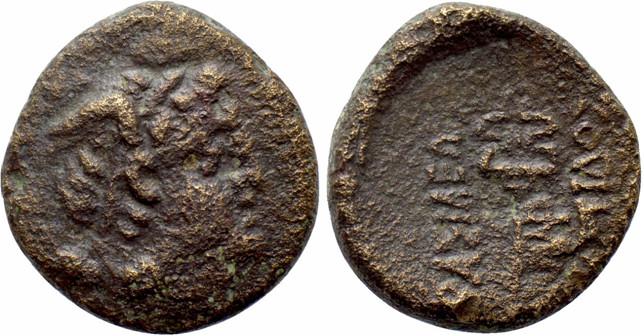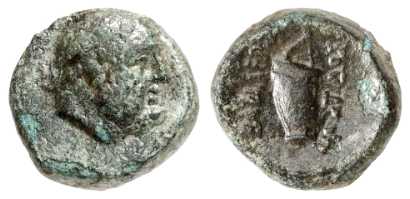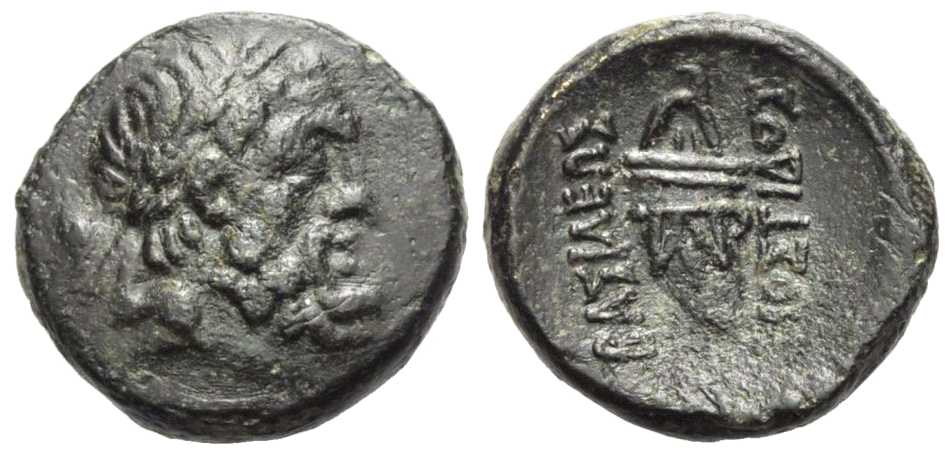Mostis appears to have been King of the Caeni (Καινοί) who inhabited the
northern littoral of the Propontis between Bisanthe, a Samian colony,
and Perinthos.
The dating of his coins in the last quarter of the 2nd and
the early 1st c. BC is based on the historical events in Thrace
and the Propontis in that period of time. After the end of the Kingdom
of Pergamon 133 BC the Romans allocated the Thracian Chersonesos and
the Thracian coast to the province of Macedonia. However, they were not
able to attain complete control of the region. Although several tribes
from the western parts of Thrace were allies to Rome, a large
portion of the thracians supported Mithradates VI of Pontos. Only after
the victory of Sullas over Mithridates 86 BC did the Romans subdue
Thrace completely. The reign of Mostis lies very probably in the period
from 133 to 86 BC. The regnal years on his tetradrachms indicate that
it lasted at least 38 years. [M.
Sayar, 1992]
Mostis is known from his coins and from the following
epigraphs found in the region of present day Tekirdag.
[Mustafa H. Sayar, 1992]

|
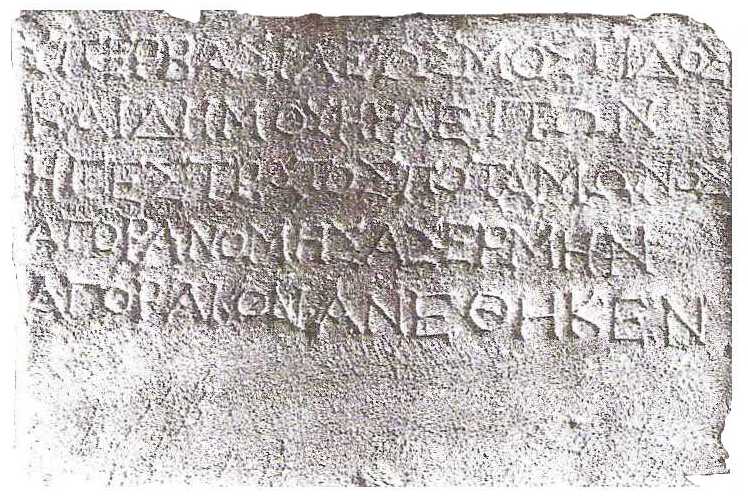 |
ΥΠΕΡ
ΒΑ[Σ]ΙΛΕΩΣ
ΜΟΣΤΙΔΟΣ ΓΛΑΥ
ΚΙΑΣ ΖΩΤΑ ΒΕΙΣΑΝΘΗ
ΝΟΣ ΑΡΤΕΜΩΝ ΑΡΤΕ
ΜΩΝΟΣ ΑΠΑΜΕΥΣ ΔΙ
Ι ΣΩΤΗΡΙ ΚΑΙ ΑΘΗΝΑΙ
ΝΕΙΚΗΦΟΡΩΙ |
|
|
ΥΠΕΡ ΒΑΣΙΛΕΩΣ
ΜΟΣΤΙΔΟΣ
ΚΑΙ ΔΗΜΟΥ ΗΡΑΕΙΤΩΝ
ΗΓΕΣΤΡΑΤΟΣ ΠΟΤΑΜΩΝΟΣ
ΑΓΟΡΑΝΟΜΗΣΑΣ ΕΡΜΗΝ
ΑΓΟΡΑΙΟΝ ΑΝΕΘΗΚΕΝ
|
|
|
| In
honor of King Mostis, Glaukias son of Zotas, the Bisanthean,
(and) Artemon son of Artemon, the Apameian, (set up) Zeus Soter and
Athena Nikephoros |
|
In honor of
King Mostis and the people of Heraion Hegestratos son of Potamon having
served as market inspector devoted Hermes Agoraios.
|
|
|


